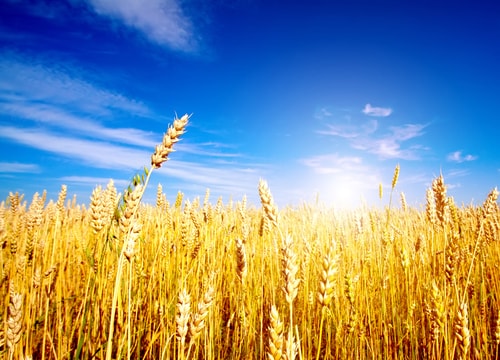Wheat kernels known to shrivel up if temperatures get too high
By Diego Flammini, Farms.com
When it comes to farming, weather is one of, if not the most important component to ensure the highest yield possible.
However, when it comes to the weather itself, farmers often find themselves feeling like Goldilocks in the house of the three bears.
“How am I supposed to grow anything without any rain? It needs to stop raining or else I’ll be swimming in my fields! Right there, that’s the perfect amount of rain.”
Or it might go something like this.
“That’s not enough sun! Well now that’s too much. Okay, that’s the perfect amount,” they might find themselves saying.
If the sun and temperature is wreaking havoc on your wheat crops, scientists at Kansas State University may have a solution.
They’re in the process of developing a wheat that can withstand higher temperatures.
“It’s gene therapy for hot temperatures and yield,” Harold Trick, a professor in the Dept. of Plant Pathology told The Topeka Capital-Journal. Trick estimates a 3-4% yield loss for every rise in temperature of 2-3 degrees F.
Wheat’s optimum temperature is between 60 and 65°F (15 – 18°C) but if the temperature should go above 86°F (30°C) the kernels start to shrivel.
When wheat starts to fill, it builds up starch, which is nearly 80% of the dry weight. The starch is a result of a conversion from sucrose.
The enzyme responsible for the conversion is called soluble starch synthase (SSS). It is that enzyme that has a sensitivity to higher temperatures and is the focus of the research.
Early trials have resulted in a 30 – 35% yield increase.
246,400,000 bushels of wheat was planted in Kansas in 2014.

Wheat